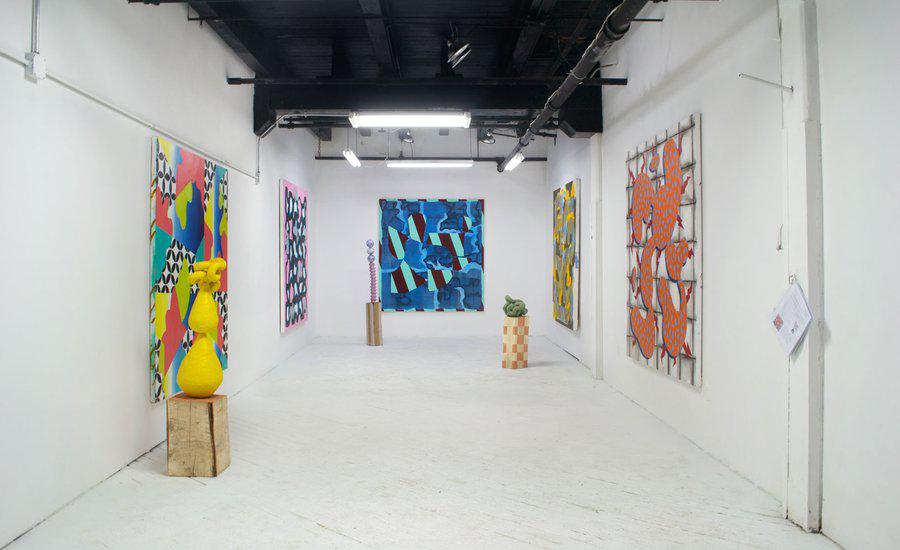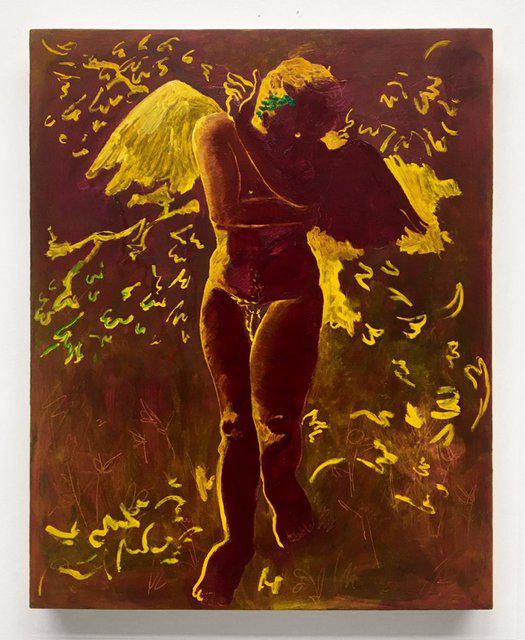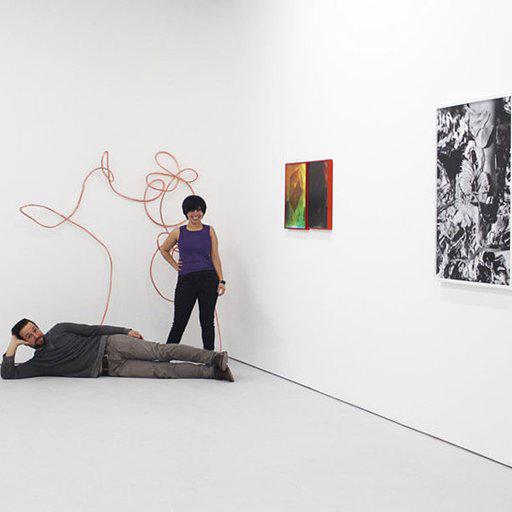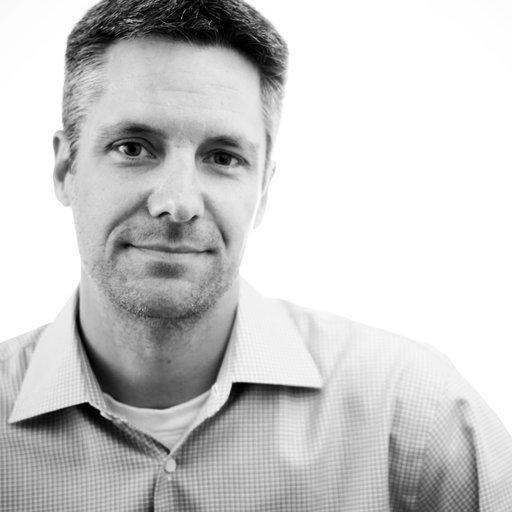Artspace is pleased to debut 10 x 10 x 10, a new initiative aimed at highlighting the programs of young and innovative galleries around the world through curated online exhibitions. Our inaugural presentation introduces a virtual collective of 10 galleries under 10-years-old across the USA. Over the next four weeks, each gallery will present a rotating collection of cutting-edge artworks exclusive to Artspace. All works featured are priced at $10K or under, in support of our mission to make collecting art accessible to a broader audience. The exhibition will be on view through July 16, 2020.
Participating galleries include: Baby Blue Gallery (Chicago, IL), Carvalho Park (Brooklyn, NY), Channel to Channel (Nashville, TN), Davis Originals (Tempe, AZ), Erin Cluley Gallery (Dallas, TX), Et al. (San Francisco, CA), LatchKey Gallery (New York, NY), Resort (Baltimore, MD), River (Los Angeles, CA) and SEASON (Seattle, WA).
We'll be carrying interviews with their founders in the weeks ahead. Today we talk with Baby Blue Gallery founder Caleb Beck.
Who are you, where are you, and what do you do? I'm Caleb Beck, the founder of Baby Blue Gallery on Chicago’s lower west side. We stage monthly exhibitions of young contemporary artists. The gallery focuses on Chicago artists, but often pairs them with outside artists.
Why did you want to start a gallery? I started the gallery, out of frustration as a young artist. There were few opportunities and what opportunities there were felt exploitative. You know, pay us $40 to maybe have your work shown and we still take 50%, Oh, and you also have no say in the creative direction. I wanted to take on the challenge of making a space that is engaging, fair to artists, and economically viable.
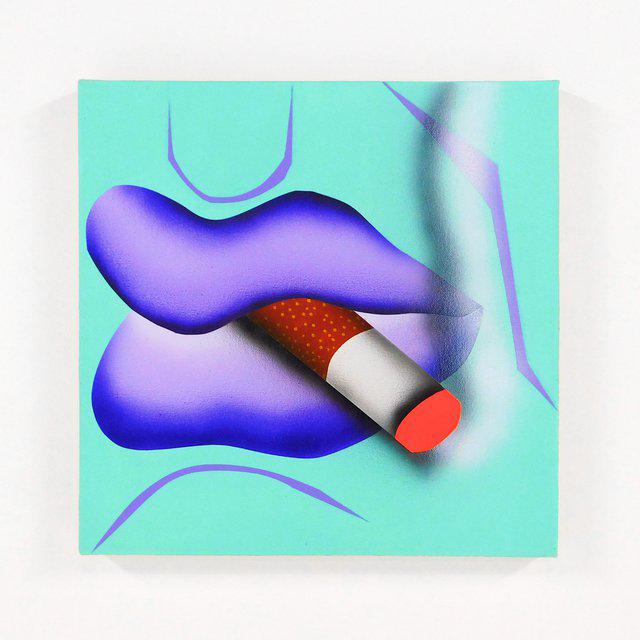
How has your program evolved since you began? When I ran Baby Blue Gallery out of my apartment, which was the first 6 shows, it was a very hands off, do whatever you want approach, just don’t punch a hole through the ceiling. For instance the first show ever, was a solo by Eric Stefanski. He showed up with a car loaded full of his most recent work, we lugged everything up two flights of stairs, and then played around rearranging the work until we found something we thought worked.
When I moved to a commercial space, I wanted to focus more on pairings or group shows. A few artists whose work interacts and builds off one another. For instance, an exhibition I did with artists: Shalen Stephenson and Erin Lynn Smith. They had never met each other, but their pieces shared a lot of formal elements and seemed to emerge from a similar funny and energetic world. Also, the fact that Shalen is a painter and Erin a ceramicist, emphasized that these impulses and styles cross media.
What has been your biggest success? And what’s been your biggest challenge? Success for me is the positive feedback from the artists and the people who come. It feels rewarding when someone is excited about the work and the curation. Write-ups and reviews are also great.
The biggest challenge is an art “world” that's increasingly pay-to-play. The cost of education, rent, and access increase every year. This takes its toll on me, but it also takes its toll on the artists I exhibit. I overcome this by focusing on what creates actual value. Before I spend my energy or money on something; asking is it really worth it?
KAITLIN SMRCINA - Daphne Blake’s Shoes, with Green Banana and Plantain, 2019
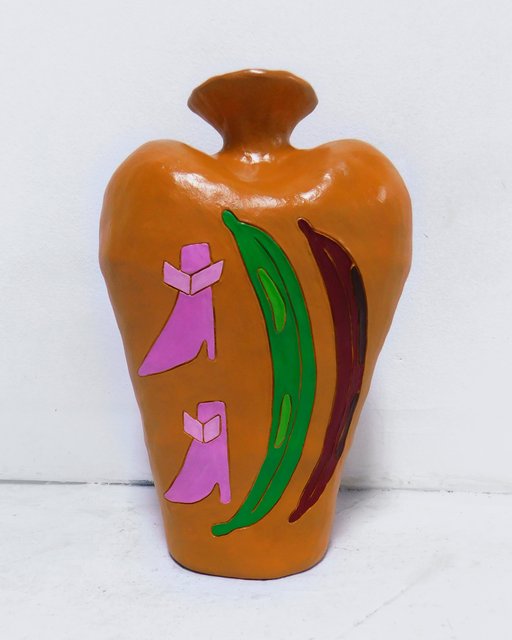
How do you advise your artists?
Honestly, that depends heavily on the artists. Some artists are hands-off and others want collaboration. Some artists are business savvy and others prefer not to think about that. I really just try to tell the artists upfront my idea or vision for the exhibition, and communicate as clearly how the gallery is run. That way they have a fair knowledge of whether they want to work with me or not. I try to only give advice if the artists ask my opinion.
What’s the thing that’s consistently surprised you about the art market over the years? I am by no means an art market wiz, but I think that economic stresses have made a lot of old habits obsolete. I was told throughout school repeatedly to not worry about the money. Presumably these people lived in nicer economic times. I think that now a lot of people want the art economy demystified and less tiered. So I guess you could say I’m pleasantly surprised when I see spaces take shrewd moves that would have been sacrilegious ten years ago. For example, I once had a 20 min conversation with a young NYC gallerist about the optics of putting a sales page on your website, i.e., will it diminish the art by looking too commercial? I think newer spaces are challenging what a gallery can be and will be in the 21st century. Most people walk into an art gallery and feel immediately alienated. They think it's too expensive and too exclusive for them. Most spaces I admire are taking steps to fix that and help new collectors.
RICARDO PARTIDA - Daybreak Lover, 2020
How will you flourish in a post-Covid artworld? I think many people have been forced to consider their digital presence. How is it utilized? How can it be improved? Where is it wasted? To me digital presence is about its feedback with the world, aiding growth, and expanding genuine relationships. For instance, I know a lot of artists who have lost their jobs, and I would like to be able to sell their work online to help them.
For me Covid is a reminder of how fragile and risky reality is. I want to re-open responsibly and until then I can plan how to improve the gallery. Maybe this is also a good time to consider that art isn’t all about openings. Maybe there are other smaller or more personal ways to utilize galleries. Finally, I’m also at the point where I’m considering and planning for art fairs. How they respond to this crisis will be very important information. Are they jeopardizing people’s safety? Are they acting fairly with artists and galleries?
What’s coming up for you in terms of shows and how will you present them? I think there is an immense pressure on spaces to exhibit as fast as possible, because it's habitual. I’m trying to ignore this pressure. I want to make sure whatever I do works with Chicago’s plan for reopening, and also isn’t irresponsibly testing the limits of that plan. Events will be more lowkey and controlled, whenever they are feasible again. Programming will continue in its current direction, small group shows prioritizing Chicago-based contemporary artists.
SARAH BANKS - Green Poodle, 2019
Tell us about one or two of the artists or artworks included in this show? Ricardo Partida is a painter who just earned his MFA at SAIC. Ricardo is a very eclectic thinker so each painting channels a lot of influences and ideas. He’s also very knowledgeable about the history of painting, in terms of material and process (e.g., imprimatura, glazing, color mixing, etc) and composition. I think he works this knowledge of how we look at paintings into the subject matter. The work is about a glance - you at a stranger, a stranger at you; a viewer at a painting, and the painting at a viewer.
I knew Sarah Banks mostly through her digital work, so I was very surprised to find that she was making these ceramic pieces. They were pretty, decorative, but also had an edge to them, that was bittersweet or sinister. I think this edge complicates the way Sarah works with nostalgia, popular imagery, and cuteness. The poodle is pretty and you want to pet it, but it also might snap at your hand. For me this dichotomy is more interesting and more authentic, than a lot of benign pretty or pop pieces.
In general the show was about complicating the act of looking. Both artists used traditional mediums known for their attractive surface, but added something darker below this surface.
We’re now in a moment where collaboration could point a way forward. How might this work for you? 2019 was a great year for exchange, because Baby Blue Gallery exhibited several Chicago artists in Mexico City, thanks to the recommendation of PLOMO Gallery and hosting by El Quinto Piso. Hopefully, opportunities like this will continue in the future. I think that there is a lot of potential between new galleries for space swaps. It is a cost effective way to collaborate nationally and internationally.











